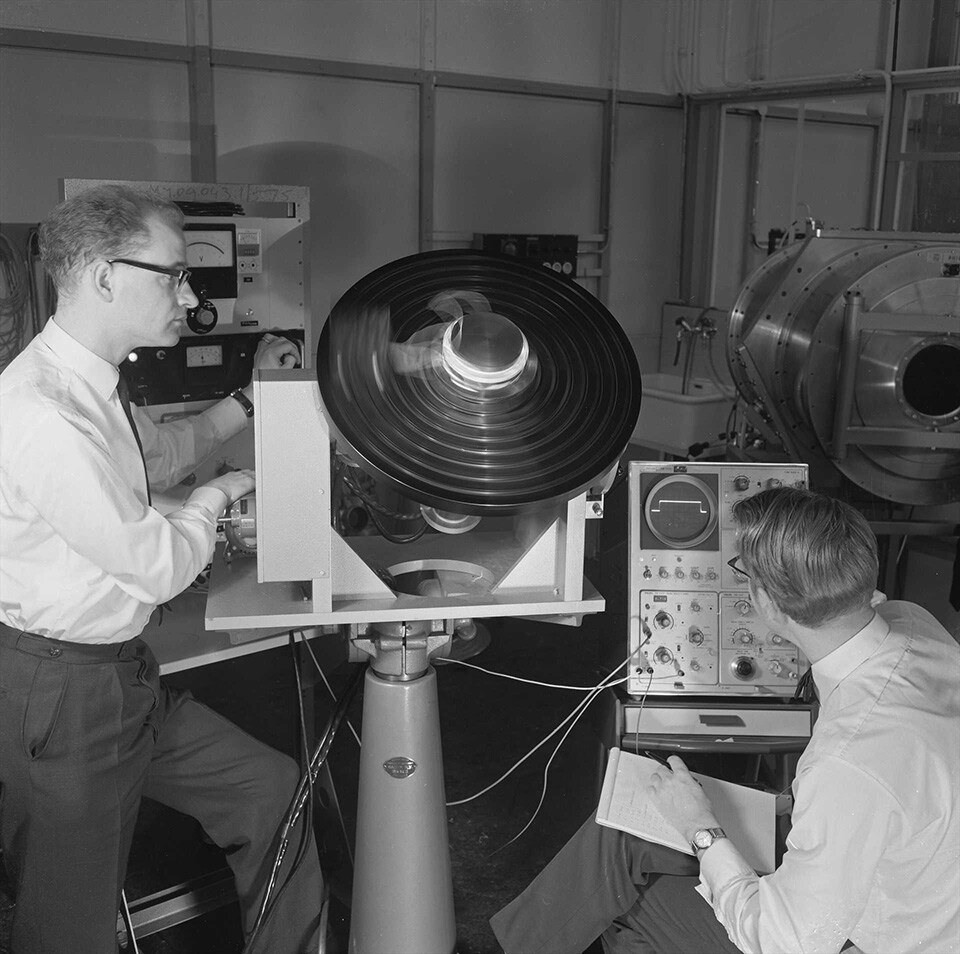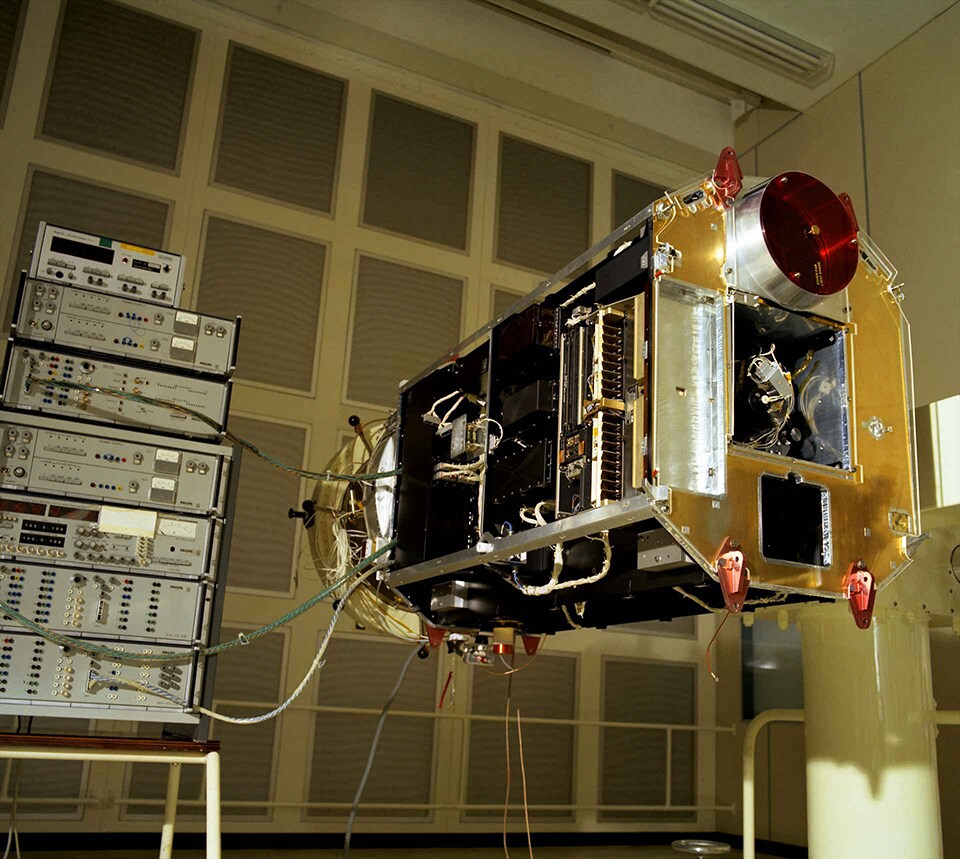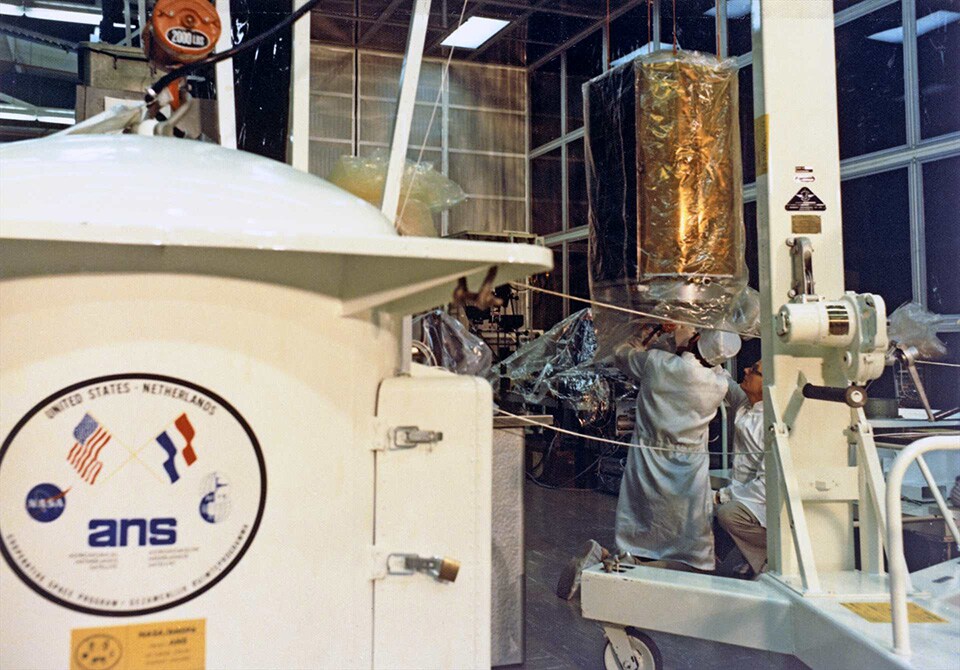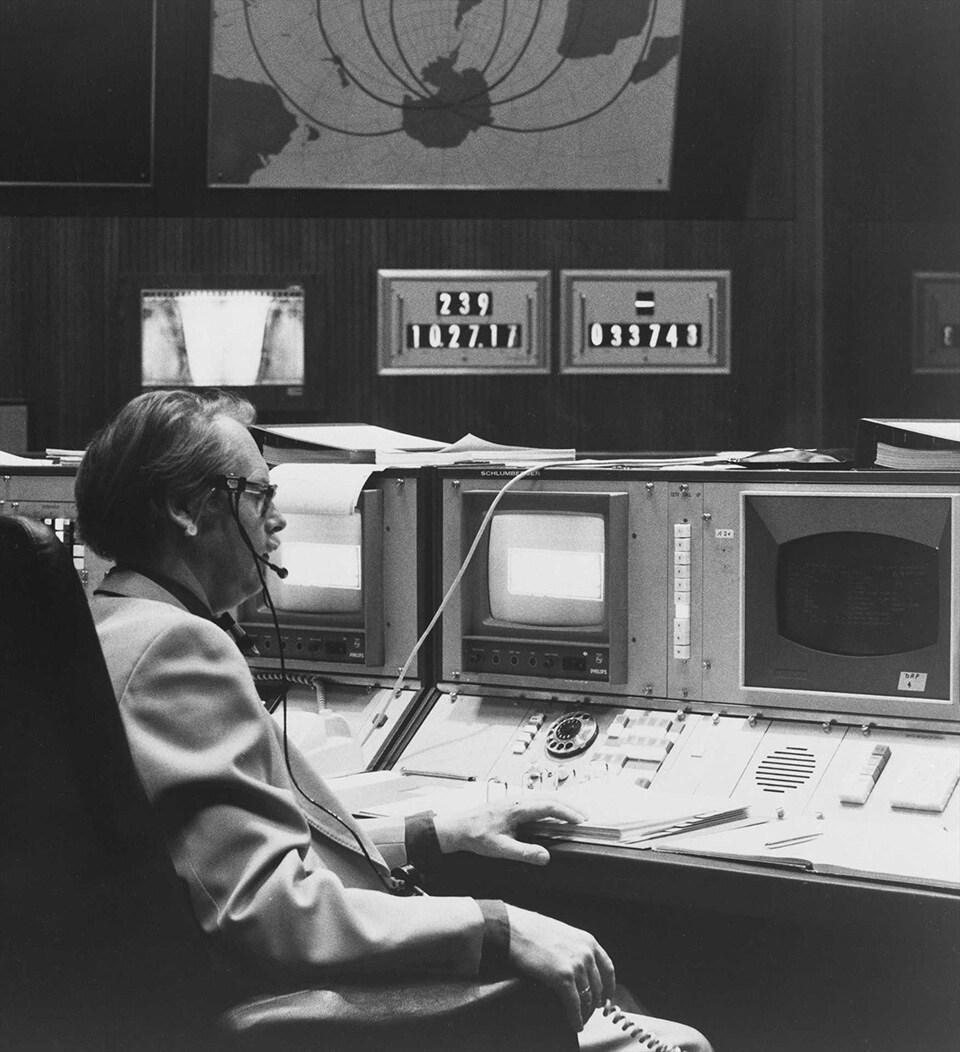“We have fine control now!”
It was those words, uttered on 30 August 1974 in the Main Control Room of the European Space Operations Centre in Darmstadt, Germany, that officially launched the Astronomical Netherlands Satellite (ANS) space mission. A memorable moment in the annals of space exploration. The ANS, the Netherlands’ first satellite, and the first digital satellite in the world, was far ahead of its time.
Cornelis (known as Kees) Kramer, an electrical engineer at Philips Research, had been involved in the ANS project as Chief Engineer since the first cardboard model of the satellite was fabricated. Before then, he led a group that developed sensors for rockets at a Philips Research Laboratory that was involved in space exploration.
“Working on that ANS project was the highlight of my career,” said Kees. “It was exciting and very satisfying. The greatest thrill, aside from the obvious technical challenge, was the challenge of technical collaboration on an international teamwork basis.” In an interview in the Philips Museum, Kees Kramer talked candidly about this ground-breaking project.

The project
In 1965, representatives of the Netherlands National Aerospace Laboratory (NLR), astronomy specialists from the Dutch universities of Utrecht and Groningen, and technicians from Philips and the then Fokker-VFW all joined forces. The objective was to design an artificial satellite that would provide insight into the life cycles of stars by measuring the radiation emitted from them. Apparently, it is impossible to measure this radiation on Earth because our atmosphere absorbs it. Back then, when the ANS was designed, astronomy had only limited knowledge in this area.
The project, which was approved by the Dutch government, was managed by ICANS (Industrial Consortium ANS), with Philips and Fokker-VFW taking the lead. Astronomy specialists from the two universities were responsible for the scientific programme and the measuring instruments.
The world’s first digital satellite
“The budget for the project was approved, but there were some conditions,” said Kramer. “The satellite had to be compact, for example, but still able to carry cutting-edge measurement technology.”
Building a satellite with a height of 123cm, a body cross-section of approximately 58 by 70cm and a maximum weight of approximately 136 kilograms proved to be a technological challenge. What’s more, it also had to be stable enough to maintain the observation of a target for a long time while orbiting the Earth. It called for a design that maximised space, weight and energy consumption.
The developers opted for a completely new, digital approach. At the time, many methodologies and technologies were new and had never been used in space applications before. “In addition to the construction of the satellite and the measuring instruments for astronomical research, a reprogrammable computer was also needed,” conceded Kramer. “Something that had yet to be invented. In those days we still used punch cards and magnetic tapes for storing and reading out data.”
It soon became obvious that existing computers just wouldn’t be suitable for the project. “The onboard computer for the ANS was completely developed and assembled at the NatLab location in Geldrop,” continued Kramer. “It had seven identical memory blocks, each with a capacity of 4K, or 4,096 bits. These could be slotted together, not unlike a fan, thus forming a whole. One block was used for control, the working memory. The others were used for loading the observation program and temporarily storing the results, in other words the mass memory, until this data could be retrieved by the ground station. We decided to equip the computer with a core memory, so that any data that was stored would not be lost forever in the event of a power failure.”

The onboard computer weighed 7.7 kilograms and had a power capacity of 8 Watts. The ground station contacted the satellite every 12 hours. With every contact, the measurement results were retrieved and a new measurement program for the following 12-hour period was sent to the computer. The computer also played a key role in the satellite’s attitude control (its accurate positioning relative to the sun). Boasting an accuracy of less than 30 arc seconds, NatLab developed an innovative digital attitude-control system specifically for the ANS. Philips provided the communication, power and ground equipment. The energy supply was generated by solar panels.
The ANS was the world’s first digital satellite. “In March 1969, we approached NASA with a view to them launching the satellite. Even NASA found it difficult to believe that a satellite could be controlled digitally from Earth, but they agreed to collaborate with us,” enthused Kramer. “They did set a condition though. In addition to experiments to measure UV radiation and soft X-rays that were to be carried out by the universities of Groningen and Utrecht, they insisted that an experiment by the Massachusetts Institute of Technology for measuring hard X-rays should also be added.”

Launched into an unexpected orbit
With the smallest four-stage Scout rocket, the summer of 1974 saw an exciting launch from a site in California. “I wasn’t present at that launch, because the most interesting stuff would be happening afterwards,” said Kramer. Instead, as Mission Director, he supported the ANS on its mission from the European Space Operations Centre in Darmstadt.
The ANS’ ascent into orbit took just 15 minutes, but the first attempt to launch it, on 27 August, 1974, had to be aborted. The second launch attempt, on 30 August, also went less than smoothly, as the technicians in Darmstadt watched with bated breath.
But when Mission Control reported that: “We have fine control now” it was clear that the launch had been successful and that all systems were switched on. However, due to a malfunction in the control system of the Scout rocket, the satellite failed to settle in its intended circular orbit of 500 kilometres above the Earth. Instead, it traced an elliptical orbit, whose nearest point to the Earth was about 260 kilometres and its furthest about 1,150 kilometres.
Asked whether this had compromised the whole experiment, Kramer matter-of-factly said: “Not really. While it’s true that the error couldn’t be neutralised, the fact that a reprogrammable computer had been installed in the satellite here on Earth meant that the impact of the error could nonetheless be kept to a minimum.” It was thanks to their innovative digital approach that it was possible to reprogram the satellite to its new orbit from here on Earth with a suitably adapted research programme. The mission was saved.

ANS tripled its planned shelf-life and made some spectacular astronomical discoveries
The satellite was originally designed to gather measurements for a period of six months. However, thanks to its excellent technical configuration it was possible for it to make scientific observations until April 1976, more than 18 months after its launch.
During ANS’ operational life, a total of some 1,000 computer programs were fed into its memory from Earth. It was estimated that ANS made over 30,000 astronomical observations and mapped thousands of objects. It managed to register a colossal X-ray burst right at the heart of the Milky Way, for example, and even discovered the existence of very hot stars.
The ANS was the first satellite in the world to be completely computer controlled. On Monday, 13 June, 1977, after orbiting our planet over 16,000 times, the ANS burned up in the Earth’s atmosphere.
Text: Miriam Lengová, Philips Company Archives
Sources: an interview with Cornelis (Kees) Kramer and Philips Company Archives

